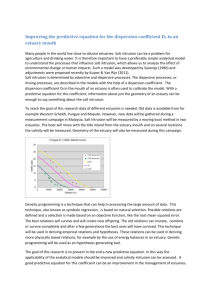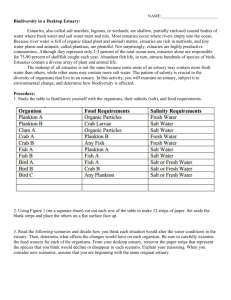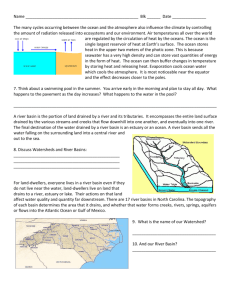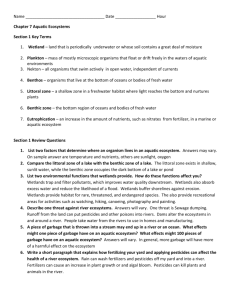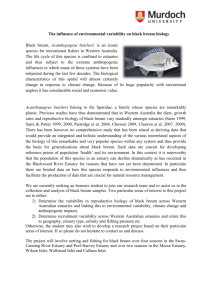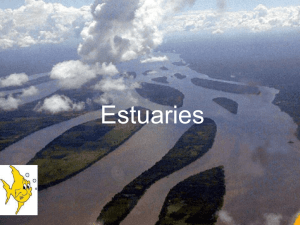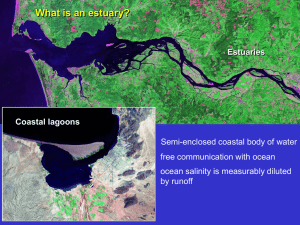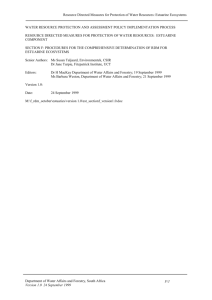Final Report - Rufford Foundation
advertisement
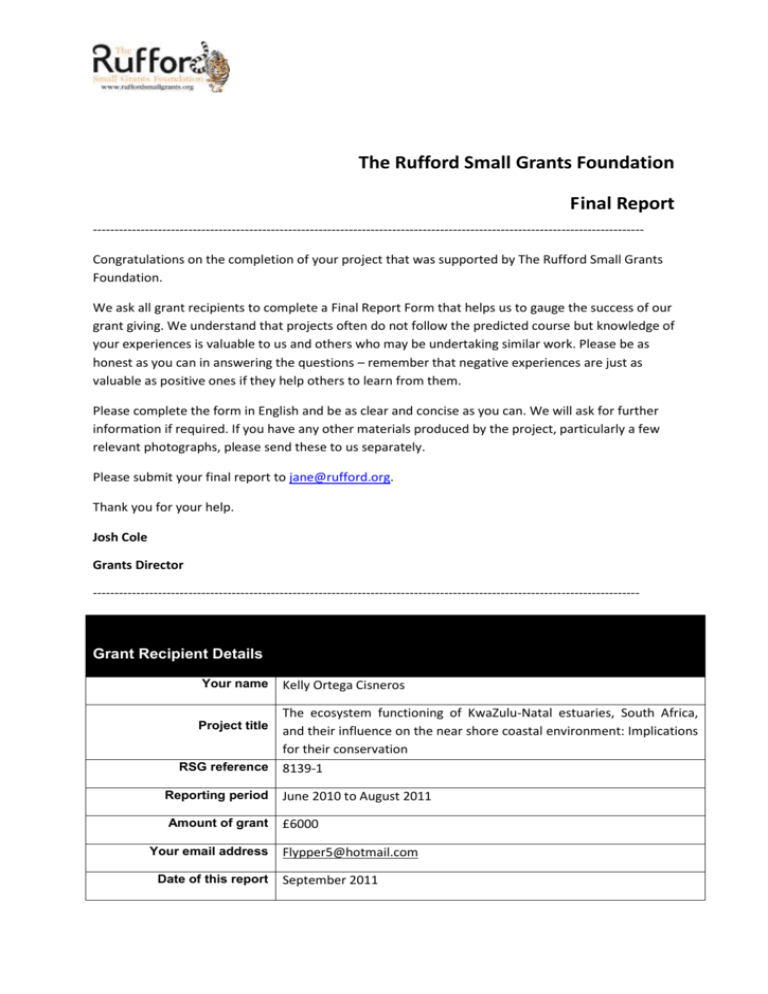
The Rufford Small Grants Foundation Final Report ------------------------------------------------------------------------------------------------------------------------------Congratulations on the completion of your project that was supported by The Rufford Small Grants Foundation. We ask all grant recipients to complete a Final Report Form that helps us to gauge the success of our grant giving. We understand that projects often do not follow the predicted course but knowledge of your experiences is valuable to us and others who may be undertaking similar work. Please be as honest as you can in answering the questions – remember that negative experiences are just as valuable as positive ones if they help others to learn from them. Please complete the form in English and be as clear and concise as you can. We will ask for further information if required. If you have any other materials produced by the project, particularly a few relevant photographs, please send these to us separately. Please submit your final report to jane@rufford.org. Thank you for your help. Josh Cole Grants Director ------------------------------------------------------------------------------------------------------------------------------ Grant Recipient Details Your name Kelly Ortega Cisneros The ecosystem functioning of KwaZulu-Natal estuaries, South Africa, and their influence on the near shore coastal environment: Implications for their conservation RSG reference 8139-1 Project title Reporting period June 2010 to August 2011 Amount of grant £6000 Your email address Date of this report Flypper5@hotmail.com September 2011 1. Please indicate the level of achievement of the project’s original objectives and include any relevant comments on factors affecting this. Objective Develop an environmental baseline for two estuaries of contrasting mouth status in KwaZuluNatal (KZN) Characterise the main biotic communities for two estuaries in KZN (June 2010-May 2011) Determine temporal variations in the size of various abiotic and biotic pools for each estuary in KZN. Establish spatial and temporal patterns of biomass and carbon and nitrogen flow pathways through the food webs of each estuary in KZN. Build ecosystem models of quantified trophic links to determine the structure and functioning of each type of estuary. Determine possible scenarios for each type of estuary and predict the response of each trophic group to changes in abiotic drivers. Presentation of results to management agencies, NGOs, Not achieved Partially achieved x Comments Quarterly sampling was conducted in two estuaries in the KZN coast from June 2010 to May 2011. Physico-chemical and nutrient analysis was conducted in water samples from sub-surface and bottom of both estuaries. Grain size and nutrient analysis on sediments was also performed. Fieldwork and samples processing have been finalised, however the identification and verification of selected benthic species is still in process. x Temporal variations have only been determined for the pelagic communities. Once the ID process of benthic species is finished, this objective will be achieved. x Carbon and nitrogen budgets will be determined through Stable Isotope Analysis (SIA). This analysis has been conducted for some of the pelagic communities. SIA will only be conducted in benthic species after the ID process is finished. Carbon and nitrogen budgets from the different communities in the estuary need to be available before starting the model construction. x Scenarios have only been determined for the pelagic communities. x x Fully achieved x When all results are available, they will be presented to different management agencies and decision makers. This project has been registered with the municipalities, etc. regional conservation agency (EKZN) and our results will be presented to them. Also, a poster presentation with our first results will be presented to the WIOMSA Scientific Symposium in Kenya. 2. Please explain any unforeseen difficulties that arose during the project and how these were tackled (if relevant). One of the main challenges faced during this study was the sampling organisation and preparation to develop the environmental and biological database for KZN estuaries. It included the sampling of physico-chemical parameters, inorganic and organic nutrients and different biological communities. Even when our sampling design was not intensive (limited number of stations), it was highly comprehensive and a wide range of material and equipment was needed to conduct this sampling. Thus, our sampling design involved a lot of preparation and was very time consuming. Another challenge has been the identification of benthic species. This process has taken much more time than expected. 3. Briefly describe the three most important outcomes of your project. 1. Develop an environmental and biological baseline for Mlalazi (permanently open estuary) and Mpenjati estuary (temporarily open/closed estuary) in KwaZulu-Natal from June 2010 to May 2011. 2. Determine temporal variations for the pelagic communities of each estuary during June 2010 to May 2011. 3. Establish possible scenarios for each type of estuary based on the dynamics of their pelagic communities. 4. Briefly describe the involvement of local communities and how they have benefitted from the project (if relevant). 5. Are there any plans to continue this work? Yes. We definitively want to continue our work in these and others estuaries in the KZN province. These environments are very important and particularly threatened by habitat degradation through freshwater abstraction from catchments, pollution and land use changes. We want to continue working in estuaries in KZN to help to fulfil a better management and conservation of these environments. 6. How do you plan to share the results of your work with others? The first results of this work will be presented to the Western Indian Ocean Marine Sciences Association (WIOMSA) Scientific Symposium in Mombasa, Kenya as a poster presentation. As well, a progress report including preliminary results has been submitted to Ezemvelo KwaZulu-Natal Wildlife (EKZN), the regional conservation agency. Our final results will be presented to this provincial authority (EKZN) and other management agencies as municipalities and will contribute to their systematic conservation planning for estuaries and to SeaPlan, the national systematic conservation planning effort of the coastal zone and marine environment. Lastly, the results of this project will be presented as scientific publications and compiled in a PhD thesis. 7. Timescale: Over what period was the RSG used? How does this compare to the anticipated or actual length of the project? The RSG has been used to cover expenses during the sampling trips on September and November 2010, February and May 2011. This project was anticipated to last for 16-18 months including fieldwork, sample and data analysis. Sample analysis will be finished during this timeframe (18 months) and as anticipated the RSG grant will be used to cover the pending nutrient and stable isotopes analysis (SIA) in water, sediment and biological samples. The ID process of benthic species will be completed at the end of October 2011 and SIA of these organisms will be conducted during November and December 2011. In conclusion, the RSG is used for the period September 2010 – December 2011. 8. Budget: Please provide a breakdown of budgeted versus actual expenditure and the reasons for any differences. All figures should be in £ sterling, indicating the local exchange rate used. Item Budgeted Amount 450 Actual Amount 500 Difference Comments Stable Isotope Analysis 2 438 2 687 - 249 Nutrient Analysis 2 240 1 570 + 670 Sediment Analysis 840 560 + 280 Miscellaneous 330 1 050 - 720 TOTAL 6 000 6 367 - 367 Transport (Petrol) - 50 Unexpected increase in fuel prices caused the difference in this item. So far, £1477 has been spent in SIA and £1220 will be used for the analysis of biological samples. The individual cost for isotope samples was budgeted £ 4.60, however the actual cost is £ 5. Moreover, this analysis had to be conducted twice in some samples due to low carbon and nitrogen signatures, which increased the total cost. Dissolved Organic Carbon was only analysed in samples from the first two sampling trips. Results were not as accurate as expected due to the high conductivity of these samples, and are thus not useful to this study. Organic matter analysis was conducted in our laboratory and thus the cost of this analysis was avoided. Additional material not initially budgeted for this study needed to be purchased. i.e GF/F filters papers ( £ 100 per box of 100), Millipore 2 µm (£ 150 per box of 100) 9. Looking ahead, what do you feel are the important next steps? The most important steps are to conclude the process of identification of benthic fauna. Once this process is finished (end of October 2011), stable isotope analysis will be conducted (data will be available by February 2012). This information will allow us to determine the biomass, carbon and nitrogen flow pathways through the food webs. This information is also the base to build the ecosystem models for each estuary. 10. Did you use the RSGF logo in any materials produced in relation to this project? Did the RSGF receive any publicity during the course of your work? To date, the RSGF logo was used in a poster presentation realised for the Advanced School on “Complexity, Adaptation and Emergence in Marine ecosystems” held in Trieste, Italy during October 18th-27th 2010. It was organized by The Abdus Salam International Centre for Theoretical Physics (ICTP), UNESCO and IAEA. A poster will be presented at the Western Indian Ocean Marine Sciences Association (WIOMSA) Scientific Symposium in Mombasa, Kenya on October 24th-29th. The RSGF logo will be used. 11. Any other comments? I would like to deeply acknowledge the RSG funding for giving me the possibility to conduct this study. I also want to thank the RSG tem for their patience and support when dealing with administrative problems encountered at my university.

